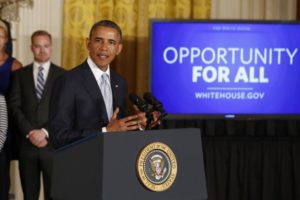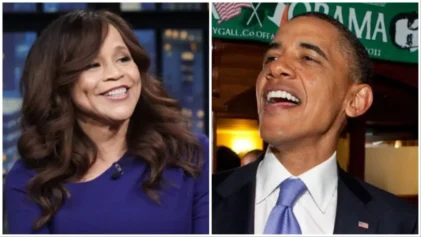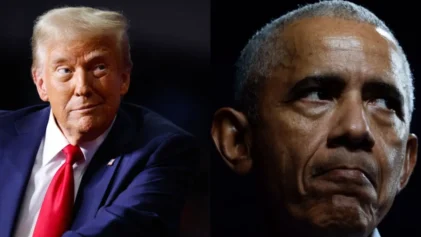
Events at home and abroad beyond his control, like the rise of ISIS in Iraq and the explosion of Ferguson after the killing of unarmed teen Michael Brown, have given commentators the impression that Obama has lost control of the narrative of his presidency. But all the while, the U.S. economy is showing significant improvement and strong performance across the board.
In other words, Obama is not getting the benefit of economic success that was enjoyed by his predecessors such as Bill Clinton, who was widely hailed for seeing the federal budget to a surplus.
Economists expected the GDP, which is the broadest measure of the economy’s health, to grow at a rate of 4 percent for the second quarter, but in actuality it grew at an annualized rate of 4.2 percent for the three months to the end of June, according to the Commerce Department’s revision of the number. Reuters polled a cross-section of economists who predicted that number for the second-quarter GDP growth pace to be revised down to 3.9 percent.
Where did the economy outperform expectations?
For one, business spending grew more in the second quarter than initially estimated. In addition, U.S.-based corporations posted higher profits. While corporate after-tax profits were $1.735 trillion in the first quarter, they showed a jump in the second quarter up to $1.8 trillion.
The rise in two consecutive quarters came after two consecutive quarters of declining profits.
There was also an increase in real personal consumption expenditures in the second quarter of 2.5 percent, following a rise in spending of 1.2 percent in the first quarter.
As pointed out by the Guardian, the economic recovery after the Great Recession is now in its fifth year. And while the general perception has been the recovery has been sluggish, things have picked up this year after a slight contraction during the winter cold.
“Demand in the second quarter was revised higher, indicating that businesses and consumers are buying,” Stuart Hoffman, chief economist at PNC Bank, told the Guardian. “And the contribution to growth from inventories was revised lower, which means that inventories will be less of a drag on growth in the second half of this year, as businesses are less concerned about having too much stock on hand…Businesses have bounced back after the bad winter disrupted production and demand, and consumers are gradually earning and spending more.”
PNC estimates that growth will continue in the second half of 2014 at a rate of about 3 percent.


